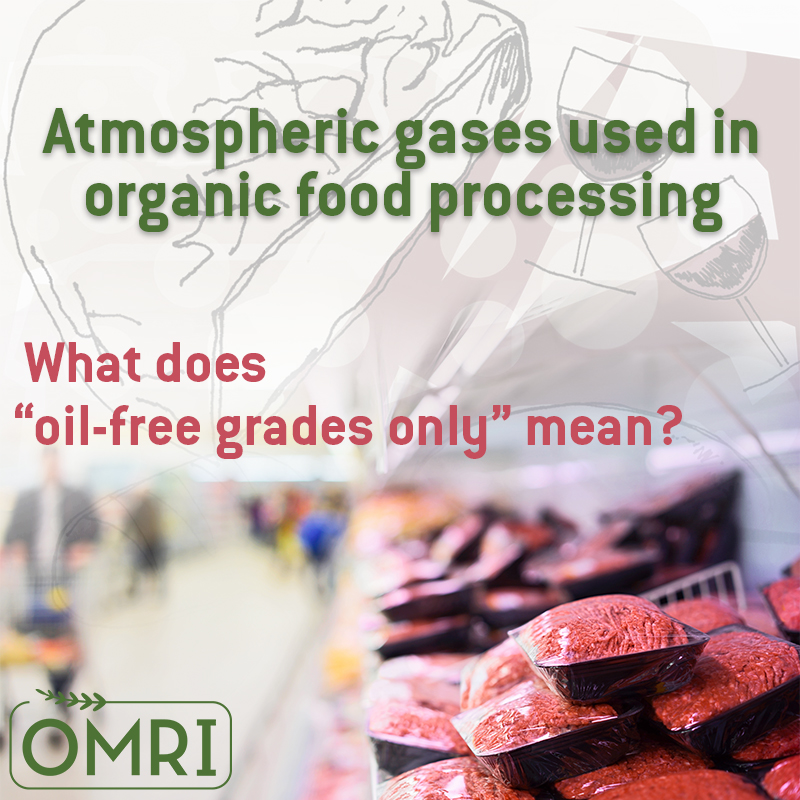Atmospheric Gases
I’ve been puzzled by what is meant about “oil-free grades” for the atmospheric gases oxygen and nitrogen. Why are those annotations there, and how does one verify if there is an oil-free grade?
The U.S. organic rules permit the use of nitrogen and oxygen gases in organic food processing, but places a restriction on their origin to “oil-free grades” only. Older methods to compress atmospheric gases involved the use of compressors that would leave significant levels of compressor oil and other petroleum hydrocarbons entrained in the atmospheric gas.
These days, the problem occurs more frequently with faulty in-house equipment due to insufficient or poorly maintained filters than with bottled gases. Food-grade bottled nitrogen and oxygen are generally not compressed using petroleum powered equipment. Instead, the gases are cooled to a liquid state and separated based on their different evaporations points.
This article originally appeared in the winter 2009 edition of the OMRI Materials Review newsletter, and was revised in January 2022 by Technical Director Doug Currier.








